As a dedicated blogger, your primary goal is to attract and engage readers to increase clicks and boost traffic to your site. To achieve this, you must adopt smart blog linking strategies as an intrinsic part of your content creation process. You improve the overall user experience and enhance search engine optimization (SEO) by effectively using internal and external links. This article aims to equip you with practical tips, techniques, and actionable insights on maximizing the potential of blog links. Discover how implementing these methods will optimize your blog’s performance.
What is Blog Linking?
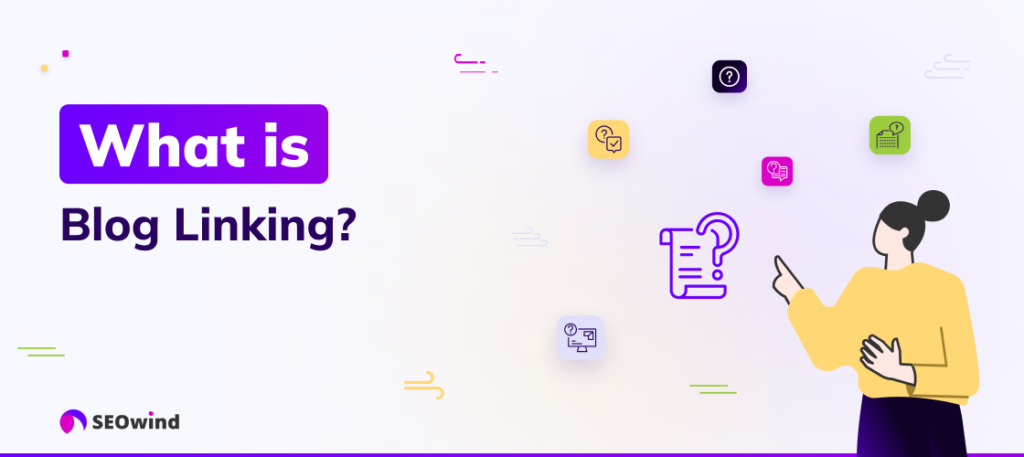
Blog linking refers to connecting different pieces of content through hyperlinks within a blog or between multiple blogs. These connections create a pathway for readers and search engines alike, enabling them to navigate smoothly across a wide range of relevant content while enhancing your blog’s visibility and authority.
Types of Links
When discussing blog linking strategies, two types of links are particularly noteworthy:
- Internal Links: These refer to the hyperlinks within your website that connect one page or piece of content to another. Internal links help establish logical relationships between pages, guiding users throughout their journey on your site.
- External Links: Alternatively known as outbound or backlinks, these link from your website to other third-party sites or resources online. External links can further substantiate claims presented in your content by directing users toward additional information from reputable sources.
Benefits of Linking
Implementing effective blog linking strategies comes with a host of advantages:
- Improved User Experience: Seamless website navigation due to internal linking fosters higher levels of user engagement by prompting readers to explore related articles effortlessly.
- Optimized SEO: Search engines reward websites that utilize high-quality external and internal links when determining web rankings; appropriate linking contributes positively toward SEO performance.
- Increased Authority and Credibility: Directing users towards reliable external sources demonstrates that your content is well-researched and trustworthy, enhancing your blog’s overall perception as an industry authority.
- Effective Indexing: Linking to newer content on your site from older, indexed posts enables search engines to crawl those new pages more efficiently, speeding up the indexing process.
By leveraging thoughtful blog linking strategies, you can elevate the success of your blogging efforts while ensuring a captivating and satisfying experience for every visitor.
Internal Blog Linking
Internal linking is the practice of connecting different pages or posts within your website through hyperlinks. These links provide a seamless navigational path for users and help search engines better understand the structure and hierarchy of internal pages within your content. An effective internal linking strategy can boost user engagement, increase page views, and improve SEO rankings.
Best Practices for Internal Linking
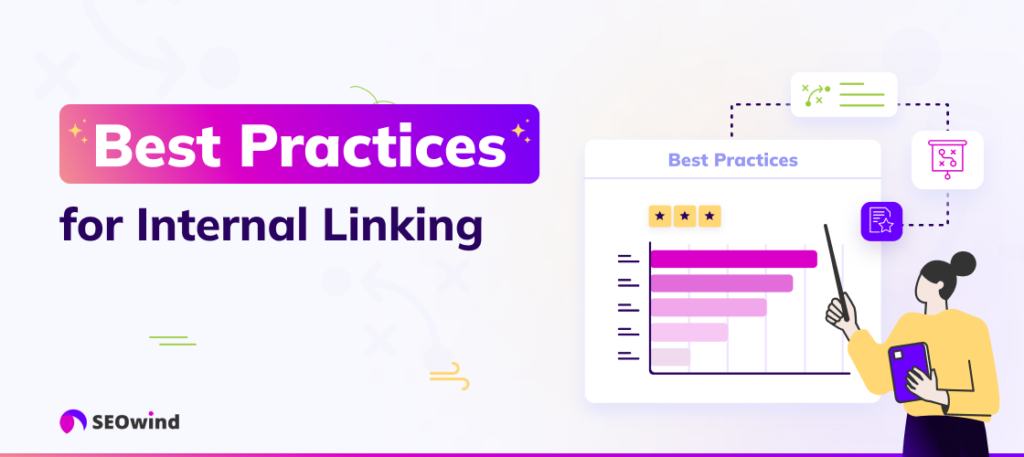
To optimize the impact of your internal blog links, consider incorporating these best practices:
- Use descriptive anchor text: Instead of generic phrases like “click here” or “read more,” use relevant and descriptive keywords as anchor texts to indicate what the linked content entails. This not only improves user experience but also aids in bolstering SEO.
- Link to high-quality content: Prioritize linking to valuable and informative pages that benefit your readers, such as cornerstone articles or comprehensive guides on specific topics. Ensure that the linked content aligns with the context of your current post.
- Strategically distribute internal links: Aim for a balanced distribution of internal links throughout your blog post by avoiding excessive clustering in one section while leaving others linkless.
- Deep link whenever possible: Focus on deep linking by directing users to pages other than just homepages or main category pages – this adds depth to your site’s structure, making it easier for search engines to crawl and index your content.
- Keep the URL structure simple: Maintain clean and easy-to-understand URLs, allowing users and search engines to identify each linked page’s purpose.
- Monitor broken links regularly: Broken or dead links adversely affect user experience and SEO performance; therefore, checking and fixing them periodically with reliable link audit tools is crucial.
How to Create an Internal Linking Strategy

Developing an effective internal linking strategy entails methodical planning followed by consistent execution:
- Audit existing content inventory: Begin by thoroughly reviewing your existing blog posts and pages, then document key topics, URL structures, and the current state of internal links within your site.
- Define content clusters: Organize your content into related categories or themes (clusters) based on target keywords and audience intent. This structure can help you identify opportunities for linking relevant pieces together.
- Develop a content hierarchy: Create a clear hierarchy of priorities among different types of content – such as cornerstone articles, tutorials, case studies, etc. – to guide the flow of link value from higher priority pages to lower ones while maintaining contextual relevance.
- Incorporate contextually relevant internal links: As you produce new content or update existing pieces, integrate internal links that make sense contextually; this could mean adding helpful resources for further reading or connecting complementary blog posts.
- Monitor performance metrics: Regularly assess the performance of your internal linking strategy through various KPIs such as bounce rate, session duration, page views per visit, and organic search traffic growth. These indicators will help you refine your approach over time.
By implementing these steps systematically in your blogging efforts, you can build a solid internal linking strategy that drives user engagement and enhances SEO effectiveness.
External Blog Linking
External linking involves connecting to websites or pages outside of your blog. These links can provide additional valuable information for your readers and indicate recognition within your niche. By incorporating external linking effectively and strategically, you can improve the credibility of your content and potentially build relationships with other bloggers in your industry.
Best Practices for External Linking
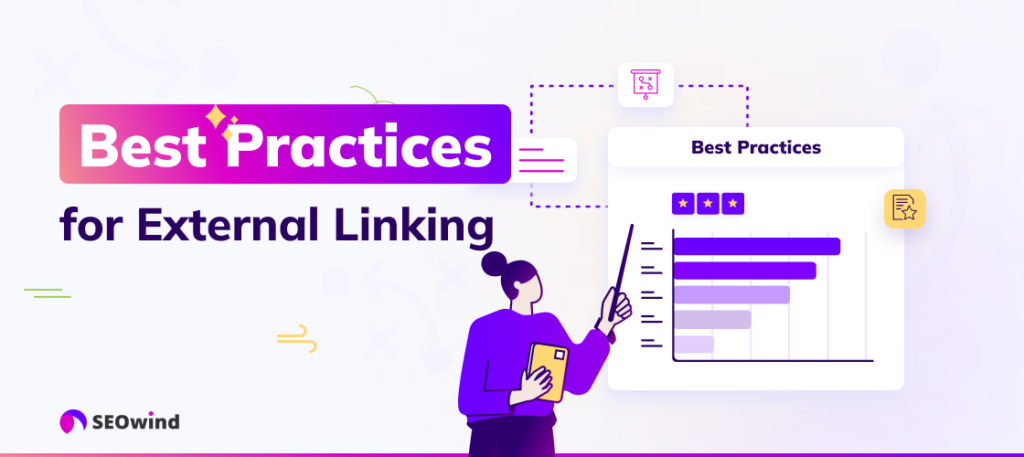
- Link to high-quality websites: It is essential to link only to reputable and authoritative websites. This will aid the reader experience and boost your chances of achieving a higher search engine ranking.
- Choose relevant links: Ensure that the external links relate directly to the content discussed in your article. If irrelevant, users might lose interest or question the reliability of your sources.
- Provide clear anchor text: Anchor text should be descriptive and precise, directing readers toward the subject matter they’re clicking on.
- Ensure that outbound links open in a new tab: Opening external links in new tabs ensure that users don’t accidentally leave your blog while exploring other sites.
- Keep track of broken links: Broken links detract from user experience, so consistently auditing these is crucial to maintaining the integrity of both internal and external linking strategies.
- Avoid overloading with excessive outbound links: While diversifying sources may positively impact user experience, over-linking could dilute its readability or distract those who would otherwise explore multiple posts on your blog.
How to Create an External Linking Strategy

Creating an effective external linking strategy involves researching relevant resources, establishing partnerships with fellow influencers, and monitoring results for possible improvements.
Let’s look into how you can approach building this strategy:
- Identify valuable resources: Seek credible websites or influential bloggers with well-researched articles complementing yours, ensuring their expertise matches or surpasses yours on a given topic.
- Establish mutual collaborations: Reach out to other bloggers within your niche by suggesting shared guest post opportunities. Building relationships can lead to backlinks and mutually benefit both parties involved.
- Customize link placement: When deciding on the position of your external links, consider user experience over commercial incentives or self-promotion.
- Keep your linking fresh: Continuously add new sources as you develop recent content to maintain relevance in an ever-evolving digital landscape. Ensure these outbound links remain relevant and informative to pique reader interest.
- Conduct regular audits and analyze data: Perform routine checks for broken links while tracking click metrics to understand how users engage with your blog links. Evaluate this data to refine your current strategy accordingly.
As you implement best practices within your external blog linking strategies, it’s crucial that you also measure its impact. Regularly maintaining high-quality sources contributes to a richer browsing experience and boosts search rankings. Ultimately, by cultivating strong relationships within the blogging community, possibilities for growth extend beyond internal optimization alone – unearthing vast potential to bolster engagement and success overall.
Blog Link Building Strategies
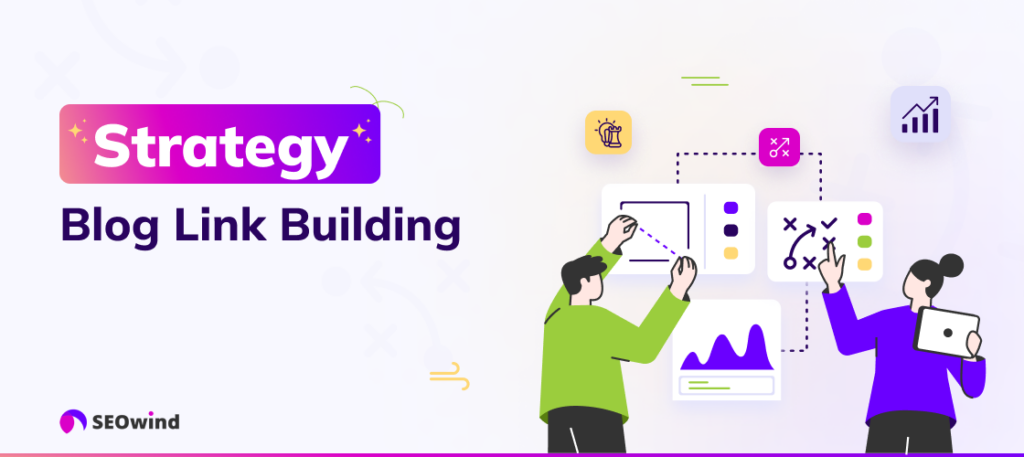
Effective blog linking involves employing various tried-and-tested strategies that can help generate valuable links. Let’s explore multiple blog link-building techniques contributing to your website’s traffic and visibility growth.
Guest Posting
Guest posting involves contributing articles to other blogs in your niche on their request or offer. By providing valuable content to other websites, you can insert relevant blog post links within the article pointing back to your own site. This technique increases exposure for your expertise and benefits from the host blog’s existing audience.
Resource Pages
Resource pages are useful lists or compilations created by bloggers within a specific industry, highlighting top resources such as articles, tools, and services. To make it onto these pages, reach out to the curator with well-researched points showcasing how your content could add value to their resource list. Convincing them of your resource’s merit may yield an external link to your blog.
Broken Links
Finding broken links on high-authority websites presents a unique blog link-building opportunity. Identify any defunct pages on their site and create improved versions of that content on your blog. Afterward, contact the webmaster with details about the broken link and propose replacing it with a link to your fresh content.
Statistics Roundup
Statistics roundups involve collecting data and trends about specific topics from various sources into one comprehensive post—or even creating original research. These posts are popular because they provide actionable insights backed by reliable data. When citing statistics or sharing findings with others in your niche, include a backlink directing readers toward more detailed explanations on your own website.
Awards
Creating an annual awards event (or even virtual) highlighting exceptional individuals or businesses in your industry is an excellent way to earn quality backlinks from authoritative sites. By recognizing outstanding work and sharing it across social media platforms, winners might naturally link to your blog’s announcement or associated content.
Guest Expert
Invite well-known and respected experts to contribute their thoughts, insights, or interviews on topics relevant to your industry. Sharing content from these guest experts not only adds credibility to your site but also prompts the possibility of them sharing it with their followers — potentially earning you more links.
Reviews and Comparisons
Detailed reviews and comparisons of products or services within your niche benefit readers seeking information before making decisions. By offering unbiased evaluations of multiple offerings, users may find value in sharing or linking to your thorough analyses as a reputable resource themselves.
Connect with Other Bloggers
Building relationships with other bloggers is essential in growing your referral network. Collaborate by engaging with their content, promoting each other’s posts on social media, exchanging guest posts, mentioning others’ work on your blog, and regularly attending networking events. In doing so, mutual benefits often arise, including links pointing back to your blog in exchange—all while strengthening community ties.
Link Roundups
Link roundups are curated lists, usually published weekly or monthly, that feature the best articles within a specific niche from various sources. To be featured in such roundups, reach out to the blogger behind them, showcasing how valuable an addition your article would make, given its relevancy and quality.
Content Syndication
Content syndication involves republishing full articles (or partially) from one website onto another, providing proper attribution, to expand audience exposure quickly. Collaborating with well-established platforms that allow syndicated content creates opportunities for
Tools for Blog Linking
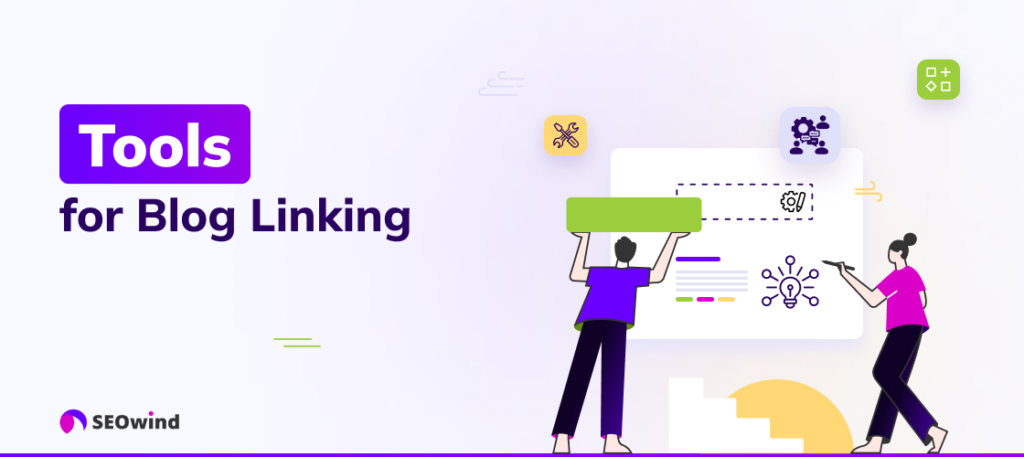
Bloggers can use several tools to optimize blog linking and build a robust link strategy. These tools help streamline identifying opportunities, automate link-building tasks, and analyze the impact of your blog links.
Let’s discuss three essential tools: Link Audit Tool, Anchor Text Tool, and Internal Link Recommendation Tool.
Link Audit Tool
A link audit tool is a valuable asset for assessing the overall effectiveness of your linking efforts. A proper link audit ensures you maintain a healthy balance of high-quality internal and external links in your content. Some popular options include Ahrefs Site Audit, SEMrush Site Audit, and Moz Pro Site Crawl. These services offer comprehensive analyses on:
- Broken or dead links
- Duplicate content issues
- Redirect chains
- Missing or incorrectly formatted anchor text
Regularly monitoring your site using these services can detect problems early and quickly implement solutions.
Anchor Text Tool
Managing anchor texts within blog links is crucial for improving content relevance and maintaining a professional user experience. An effective anchor text tool can assist with analyzing in-depth distribution patterns throughout your website.
Some popular choices are Ahrefs’ Anchor Text Report feature and Majestic’s Clique Hunter tool. Such features allow you to identify the following:
- Overly optimized anchor text: Avoid overuse of exact match keywords.
- Generic or unrelated anchor text: Maintain topical relevancy by choosing context-appropriate phrases.
- Natural keyword variations: Enhance user experience and SEO performance.
Using these insights helps create more impactful anchors that drive engagement while retaining sound SEO practices.
Internal Link Recommendation Tool
An Internal Link Recommendation Tool is a software or web-based application that analyzes the content on your website or blog and suggests relevant internal links for individual pages or posts. These suggestions are based on the similarities of the topics, keywords, or ideas in the content. Incorporating these internal links can improve your website’s search engine optimization (SEO), user experience, and overall content quality.
Link Whisperer
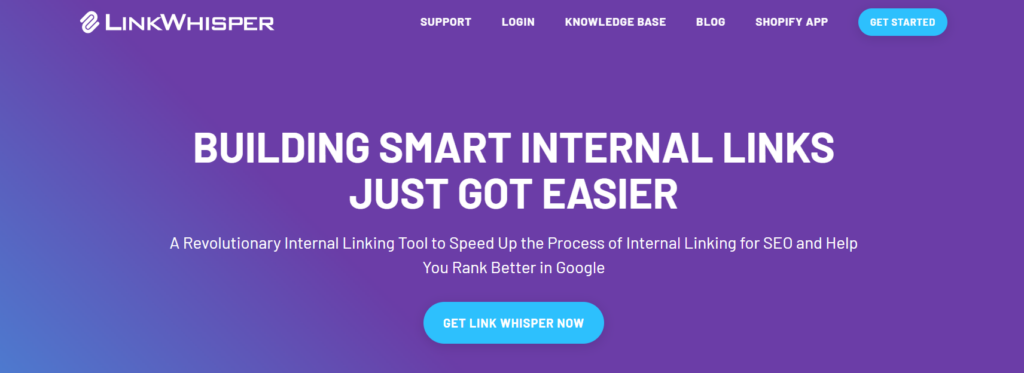
Link Whisperer is an automated internal linking plugin designed specifically for WordPress blogs—speeding up content creation while encouraging best practices for blog linking. The key functionalities offered by this plugin include:
- Automated suggestions for relevant internal links based on the content of your articles.
- Quick editing capabilities, enabling you to add or modify suggested links swiftly.
- Comprehensive dashboard reports highlighting internal link statistics throughout your website.
Link Whisperer makes it exceptionally easy to optimize internal linking efforts without consuming excessive time or manual effort.
InLinks
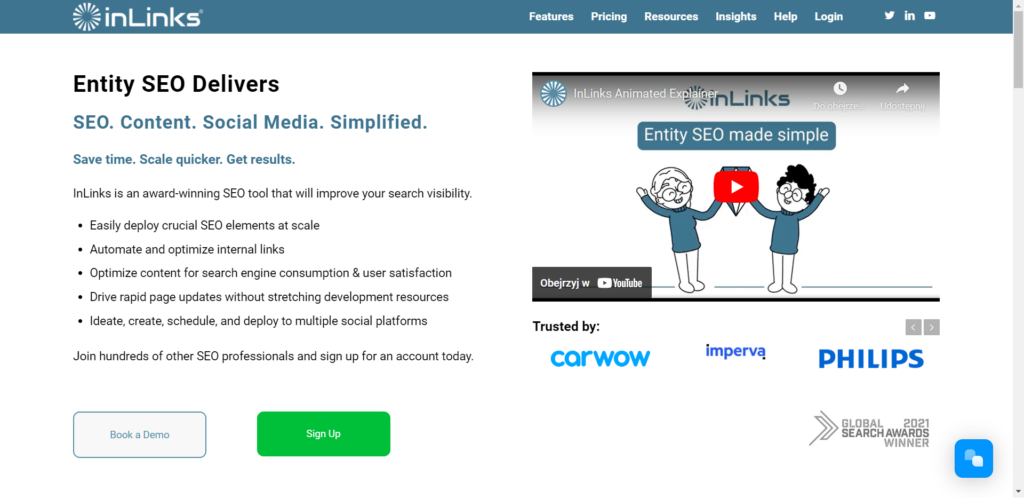
Inlinks is an AI-powered content optimization service that streamlines blog linking by automating keyword analysis and providing context-driven internal and external link recommendations within your niche. Some notable features include:
- Customizable contextual entity suggestions for improved relevance in content and anchor text
- Automated Schema markup generation for enhancing search engine visibility
- NLP (Natural Language Processing) driven insights for boosting overall SEO value.
By integrating these tools into your link-building arsenal, you’re one step closer to unlocking the full potential of blog linking strategies while focusing on quality content creation.
Tips for Optimizing Blog Links [Tried and Tested]
![Tips for Optimizing Blog Links [Tried and Tested]](https://seowind.io/wp-content/uploads/2023/06/tips-for-Optimizing-Your-Blog-Links-1024x457.png)
Optimizing your links to support better user experience and search engine performance is essential to capitalize on the potential of blog linking fully. Here are some valuable tips to help you achieve a refined and compelling blog linking strategy.
Balance Organic and Paid Link Building

Ben Lau, Founder, Featured SEO Company
While prioritizing organic link building and creating high-quality content is crucial, considering paid options like sponsored posts and paid backlinks can be beneficial in certain situations, such as when trying to boost visibility quickly or when working with a brand or partner willing to pay for sponsored content.
However, it’s important to use paid options strategically and to prioritize organic link-building in the long term. For example, if you’re struggling to achieve backlinks, reaching out to websites in your niche and offering to pay for a sponsored post can help you secure a valuable link and increase your visibility.
Prioritize User Experience
First and foremost, always prioritize the user experience in your content-linking decisions. Ensure that the links you add serve a clear purpose, are relevant to your audience’s interests, and contribute valuable information. Additionally, avoid overloading your article with too many links. Strategically place them throughout the text to keep readers from being overwhelmed or distracted by multiple links.
Create Descriptive Anchor Text
The anchor text used for your blog links significantly affects SEO performance and user engagement. Instead of using generic phrases like “click here” or “learn more,” craft a descriptive and contextually relevant anchor text that clearly expresses what visitors can expect if they follow the link. This helps users quickly identify links worth exploring and strengthens their relationship with search engines.

Brenton Thomas, CEO, Twibi
My #1 technique for blog linking is to link to relevant content with descriptive anchor text.
This will help your readers find more valuable content, build relationships with other bloggers, and improve your SEO.
Mix Up Link Types
Employ various link types within your articles, including internal, external, deep linking (links that go directly to specific points within a web page), and surface navigation (links that connect readers to broader categories or sections). An even mix of link types caters to diverse reader preferences while enhancing SEO potential by building an interconnected web of relationships between your blog pages and other relevant online resources.
Employ Nofollow Attributes Judiciously
Not all external links merit full-fledged endorsement from an SEO perspective. For instance, when citing user-generated content or paid promotions, consider adding the rel= “nofollow” attribute to these external hyperlinks to signal their distinctiveness without impacting search ranking algorithms negatively. Implement responsible blogging practices that maintain healthy boundaries between editorial content integrity and questionable promotional tactics.
Open External Links in New Tabs
One simple yet overlooked tip for optimizing your blog links is setting up external links to open in new browser tabs or windows. This approach ensures that readers stay connected to your blog even as they explore relevant external sites and resources, maximizing the overall time spent on your website from each user session. Most content management systems (CMS) provide straightforward options to configure this behavior when inserting hyperlinks into articles.
Optimize Internal Linking Strategy

Aquibur Rahman, CEO, Mailmodo
Identify the top-performing pages on your website that receive more backlinks and drive more traffic, then categorize your website’s pages and internally link pages within the same category from these highly backlinked pages.
Doing so enhances the ranking of topic-specific pages and establishes authority in those areas.
Don’t Neglect Mobile-Friendly Link Usability
More and more users are accessing blogs via mobile devices, making it essential to optimize link usability for smaller screens. Ensure your links are easily clickable by adhering to responsive design principles, selecting fonts thoughtfully, and adding ample spacing between hyperlinks to prevent accidental misclicks. A seamless mobile experience leads to higher engagement rates and overall site performance among today’s increasingly diverse device users.
By following these tips for optimizing your blog links, you can elevate reader engagement levels and search engine optimization efforts while maintaining a high standard of user-friendly content creation. Effective link implementation is vital for gaining meaningful traction within the modern digital landscape and driving exceptional results across various online success metrics.
Focus on Quality Content and Networking

Kevin Hall, Marketing Operations, Webserv
As for my #1 technique for blog linking is to actively engage with other bloggers and website owners in your niche. Networking and building relationships within your industry are crucial for acquiring quality backlinks. Contact other bloggers, collaborate on guest posts or content partnerships, and participate in relevant online communities. Establishing genuine connections and providing value to others increases the chances of receiving backlinks from reputable sources.
Managing Your Blog Links
Effectively managing your blog links is essential to a successful linking strategy. A well-organized system improves the user experience and contributes to SEO benefits. This section will cover various steps and techniques to help you easily manage your blog links.
Regular Link Maintenance
Regularly monitoring your blog to find broken links is crucial for maintaining the overall health of your website. Make it a habit to check for broken links and fix them immediately. Since broken links can negatively impact your search engine rankings, I recommend using tools like Google Webmaster Tools or Broken Link Checker to identify any problematic blog links at least once a month.
Page Hierarchy and Navigation
Blog link management goes beyond just adding and removing hyperlinks; it also pertains to structuring the content logically within your site pages. A well-structured page hierarchy with clear navigation menus helps readers easily locate relevant information and boosts engagement by encouraging exploration throughout the content.
Use categories, tags, or labels to group related articles together, ensuring that each item belongs in its appropriate place on your website. Limiting the number of top-level categories simplifies the navigational process, so keep that in mind when designing your website’s structure.
Updating Content Links
Stay current with industry trends and consider updating old posts if new information arises or if better resources are available. Constantly reassess and update outdated blog links when revising old content.
Replace low-quality external sources with more authoritative ones when opportunities arise. Elevating the credibility of external sources adds value for readers by providing access to reliable information through updated blog links.
Anchor Text Optimization
Take advantage of anchor text wisely while managing blog links—both internal and external—by describing what users can expect upon clicking through accurately. Avoid overly generic terms such as “click here” or “learn more,” opting for descriptive phrases related to the linked topic.
Additionally, use caution when using keyword-rich anchor text for external links to avoid potential Google penalties. Natural language is the best practice when managing blog links related to search engine optimization (SEO).
Control Link Flow
Ensure that essential pages on your website are prioritized by controlling link flow naturally and strategically. Organizing content from a general to a more specific structure helps guide visitors effectively through your site’s content hierarchy.
Remember that providing too many outbound or internal links per page may overwhelm readers and dilute the link value passed from one page to another. Striking a balance in volume while considering user experience and SEO considerations is crucial.
By remaining vigilant in maintaining these aspects of blog linking within your management strategy, you’ll improve user satisfaction, increase organic traffic growth, and maximize overall long-term content engagement.
Measure the Impact of Your Blog Links
Effectively measuring the impact of your blog links is crucial for gauging your overall linking strategy’s success. By closely monitoring the performance of your external and internal links, you can make well-informed decisions to improve user experience, increase page views, boost SEO rankings, and ultimately drive more traffic to your website. In this section, we’ll discuss various metrics you should track and offer insights on how to analyze each.
Key Metrics to Track

There are several essential metrics you should be monitoring to evaluate the effectiveness of your blog linking:
- Click-Through Rate (CTR): This measures the percentage of users who click on a link within your content. A higher CTR indicates that your links effectively grab users’ attention and inspire them to explore more.
- Bounce Rate: The bounce rate represents the percentage of users who navigate away from your site after viewing just one page. You want a lower bounce rate because a high bounce rate might signal weak or irrelevant links in articles.
- Time on Page: The time users spend on a particular page indicates their engagement with your content. When employing smart blog linking strategies, aim for higher time-on-page statistics as they suggest valuable and relevant connections between articles.
Analyze Link Performance
After gathering data on key metrics, you’ll need to analyze the results systematically:
- Compare metrics before and after implementing new link strategies: A/B tests different linking techniques by comparing historical data before you made changes to current statistics following alterations in blogs’ link-building approaches.
- Evaluate linked page performance: Monitor both the source page (the page containing the link) and destination page (where the link redirects) performances since these pages must work together cohesively for overall success.
- Identify trends: Explore patterns resulting from specific linking methods or themes in your blog content, leading to increased site traffic and engagement with blog links.
Adjust Your Blog Linking Strategy
When analyzing your metrics, it’s essential to be flexible and adjust your blog linking strategy accordingly:
- Consider revisiting your links’ anchor text or context if you observe a high bounce rate or low time-on-page stats. Make sure they match users’ expectations and guide them toward relevant information.
- Experiment with various link placements within your content, which can significantly impact user interaction with blog links. Varying the location of internal or external links on the page could lead to improved click-through rates or longer dwell times.
By continuously measuring the impact of your blog link strategies through key metric tracking, systematic analysis, and strategic adjustments, you can create highly engaging content that effectively drives both user satisfaction and website performance.
Common Mistakes in Blog Linking
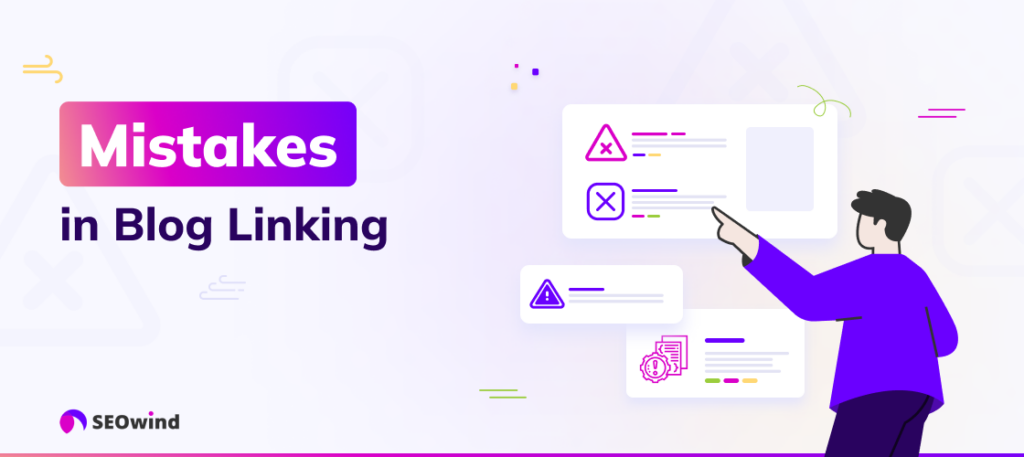
To fully reap the benefits of blog linking, you must be aware of common mistakes that can hinder your blog’s growth and performance. Avoiding these missteps will ensure a more streamlined and effective process for implementing linking strategies.
Excessive Use of Generic Anchor Text
One common mistake in blog linking is the excessive use of generic anchor text. While tempting to use phrases like “click here” or “read more,” they do not provide any context about the content being linked to.
Instead, aim to create descriptive anchor texts that reflect the topic of the linked content. This practice enhances usability and helps with SEO by informing search engines about your site’s structure and relevant keywords.
Adding Links Without Properly Assessing Their Value
An often overlooked aspect of blog linking is assessing each link’s value. To avoid falling into this trap:
- Make sure that all external links point to reputable sources
- Ensure internal links open new avenues for visitors to explore related content on your website.
Remember, adding links that appear well-connected can backfire, as irrelevant or low-quality links may negatively impact your site’s credibility and SEO.
Neglecting Broken Links
Over time, changes and deletions in web pages may result in broken links. These dead ends not only frustrate users but also diminish your website’s UX (User Experience) and authority in the eyes of search engines. Incorporate regular link audits into your maintenance routine to identify and fix broken links promptly.
Ignoring NoFollow Tags When Necessary
While placing outbound links offers both reciprocal benefits and improved visitor experience, it is essential to consider when using nofollow links or tags might be advantageous. Nofollow tags instruct search engines not to follow specific outbound links without negatively impacting your site’s ranking. Consider implementing them when:
- Linking to unverified websites
- Linking to pages with a high risk of comments spam
- Connecting to commercial or promotional content from partners
Overlooking Mobile Optimization
With an increasingly large portion of users accessing the internet through mobile devices, prioritizing mobile optimization for your blog linking strategy is essential. Responsive design ensures users get optimal experience and engagement with your content on any device.
Mobile optimization involves creating short, concise anchor text and easy-to-click link placements accessible to users on touchscreens. Failing to do so may result in reduced organic search traffic and a higher bounce rate due to poor usability on mobile devices.
In conclusion, avoiding these common mistakes in blog linking will lead to more effective link-building strategies and improve overall website performance. Implement descriptive anchor texts, properly assess links’ value, periodically fix broken links, utilize the nofollow link” tags when needed, and ensure mobile optimization for your blog links. By avoiding these pitfalls, you can strengthen your site’s credibility and enhance user experience while boosting SEO efforts.
SEO Considerations for Blog Links
Search Engine Optimization (SEO) plays a crucial role in determining the success of your blog linking strategies. It’s essential to consider various aspects of SEO when incorporating links into your blog content. This section discusses some vital SEO considerations that should influence your blog linking decisions.
Quality and Relevance of the Linking Sources
Ensuring that internal and external links are relevant and come from high-quality sources is essential. Google and other search engines prioritize content with authoritative and trustworthy links while penalizing content with spammy or unrelated connections. As such, always link internally to helpful and engaging articles within your website, aligning well with the topic under discussion.
For external links, strive to associate only with reputable websites renowned for their expertise in the field. These high-quality backlinks send positive signals to search algorithms about your domain’s credibility—ultimately enhancing your site’s ranking on SERPs (Search Engine Results Pages).
Anchor Text Matters
Anchor text is the visible text in a link users click on when navigating the web. Well-formatted anchor texts impact SEO positively since search engines use them to indicate what the linked page covers. To optimize anchor texts:
- Use appropriate keywords: Incorporate relevant keywords into your anchor text phrases without overstuffing.
- Avoid generic terms: Refrain from using generic words like “click here” or “read more,” but aim for descriptive phrases related to the linked content.
- Maintain varied phrasing: Don’t repeatedly use identical anchor text throughout your article; instead, vary word combinations despite targeting similar topics.
Monitor Your Link Profile
Analyze your link profile by evaluating incoming external connections and perform regular audits to maintain optimal benefits from blog links. This entails keeping track of the following:
- The number of inbound links: A higher number usually signifies a solid online presence.
- Quality metrics of linking websites: Include domain authority, trust score, and relevance to your niche.
- Anchor text distribution: Keep it natural and diverse to avoid negative SEO implications.
Balancing Internal and External Links
Striking the right balance between internal and external links is essential for maximizing SEO benefits. Too many outgoing connections may dilute your site’s authority, while excessive internal connections might hamper the user experience. Aim for a harmonious mix that augments interactivity and optimizes the overall blog performance in search engine rankings. As you consider the appropriate number for each type, consider factors like the size of your website or post length.
Legal Considerations for Blog Links
As you develop and implement your blog linking strategies, you must know the legal considerations surrounding the practice. While link building is integral to online marketing and search engine optimization, some practices can lead to legal issues or violate guidelines set by search engine giants like Google.
Copyright Infringement
When including external links in your content, respect copyright laws. Linking to material without proper permission can result in copyright infringement claims against you. Always ensure that the web pages, images, videos, or any other resource you link to are legally available for sharing.
Trademark Violation
Be careful when creating blog links using brand names, trade names, or trademarks. Ensure you have proper authorization if mentioning someone else’s brand as part of a review or comparison. Unauthorized use may lead to trademark violations, resulting in cease-and-desist notices or legal action.
Citation Practices
Adhere to ethical standards when quoting sources in your blog posts: accurately attribute all factual information from third-party websites. Failing to credit original authors appropriately can raise plagiarism concerns and damage your reputation as a credible online source.
Affiliate Disclosures
If your blog includes affiliate links – URLs directing readers to a product with which you have a commission-based relationship – then it’s mandatory to disclose this information transparently. Regulations such as those enforced by the U.S. Federal Trade Commission (FTC) require bloggers engaging in affiliate marketing practices to inform their audience about the nature of these relationships openly and conspicuously.
Here are some proactive measures for addressing these legal considerations:
- Be diligent when choosing outbound links; only include reputable sources.
- Regularly review linked content to ensure its continued legality.
- Add proper citations for borrowed information or materials.
- Indicate sponsored/affiliate links with easily understandable disclosure statements.
By staying informed about relevant regulations and acting responsibly, you can minimize potential legal risks while benefitting from the advantages blog linking offers for your content strategy.
Common Questions on Blog Linking
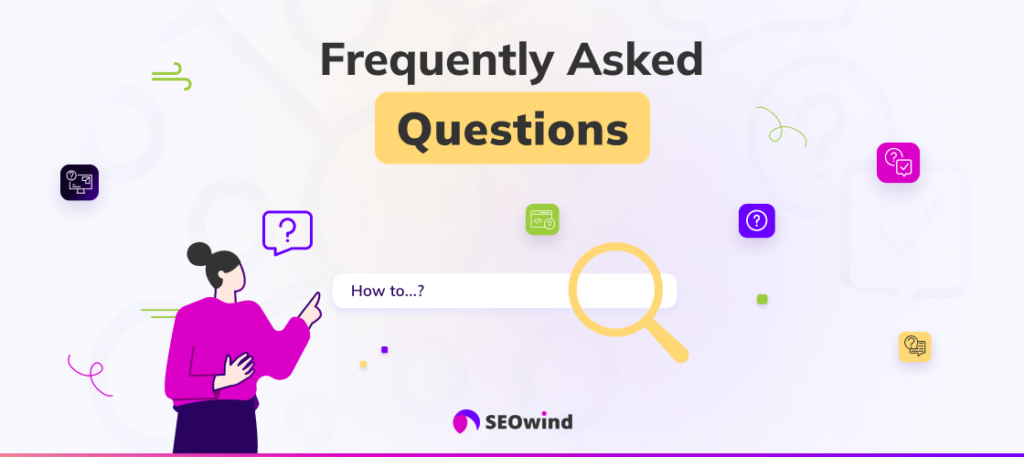
A solid understanding of blog linking is essential for any blogger or content writer.
Can you have too many internal links on a blog post?
While internal links provide valuable navigation aids for your readers and significant SEO benefits, adding an excessive amount of those might lead to several issues. Too many internal links within a post could:
- Distract your readers from your main message
- Overwhelm or confuse your audience
- Cause search engines to view your content as spammy if done excessively
As a rule of thumb, focus on including meaningful and contextually relevant internal links that benefit users’ experience and SEO goals rather than striving for specific numbers.
How many links should I have in my article and blog?
There isn’t an absolute number of links you should be aiming for in each article or across an entire website since the ideal quantity varies depending on factors such as:
- The length and depth of your content
- The relevance and usefulness of the linked resources
- User engagement metrics like click-through rates
However, ensure you distribute appropriate quantities of internal (links within your site) and external (links pointing to other sites) throughout every page while maintaining natural language—remember that quality prevails over quantity.
How do I add links to my blog post?
The process of inserting hyperlinks in a blog post depends on the platforms you are using; nevertheless, most blogging systems follow similar instructions:
- Highlight the text portion where you want the hyperlink displayed.
- Click on the “link” icon in your content editor’s toolbar—it usually resembles a chain.
- Copy and paste the target URL into the designated input field.
- Select whether you want your link to open in a new tab or window, if necessary—options may vary by the editor.
- Click “Insert” or “Submit,” and double-check that your hyperlink functions correctly.
Remember to incorporate keyword-rich anchor texts (the actual words that comprise the clickable part of your link) strategically throughout your content, as this aids users and search engines alike in understanding the linked destination topic(s).
Should I be linking to other websites in my blog posts?
Including external links to high-authority websites comes with several advantages:
- Improves user experience: Directing readers to be valuable and supplementary resources enriches their learning journey.
- Enhances credibility: Showcasing well-regarded evidence strengthens your arguments, positioning yourself as an expert in your industry.
- Boosts SEO value: Search engines associate external linking patterns with content quality—correctly linked sites signify trustworthiness.
However, make sure you meticulously assess the reliability of each source you’re promoting; otherwise, directing visitors toward inaccurate or spammy pages can damage your reputation and hinder long-term SEO outcomes severely.
Blog linking is crucial for improving user experience, building authority within your niche, and achieving optimal search results rankings. Platforms can vary when adding links; remember to reference reliable sources while maintaining an appropriate balance between internal and external connections.


